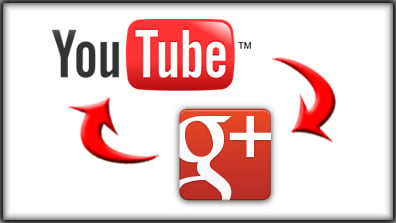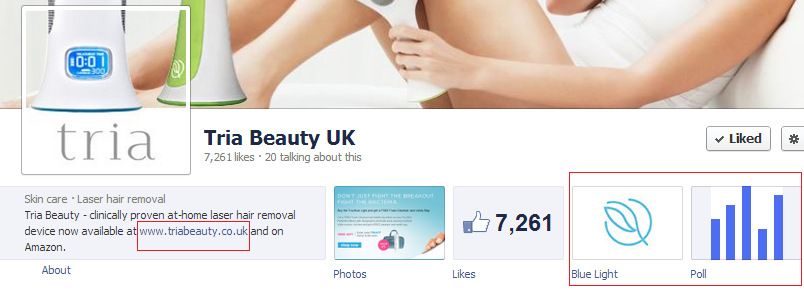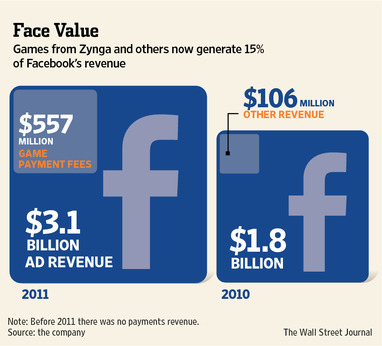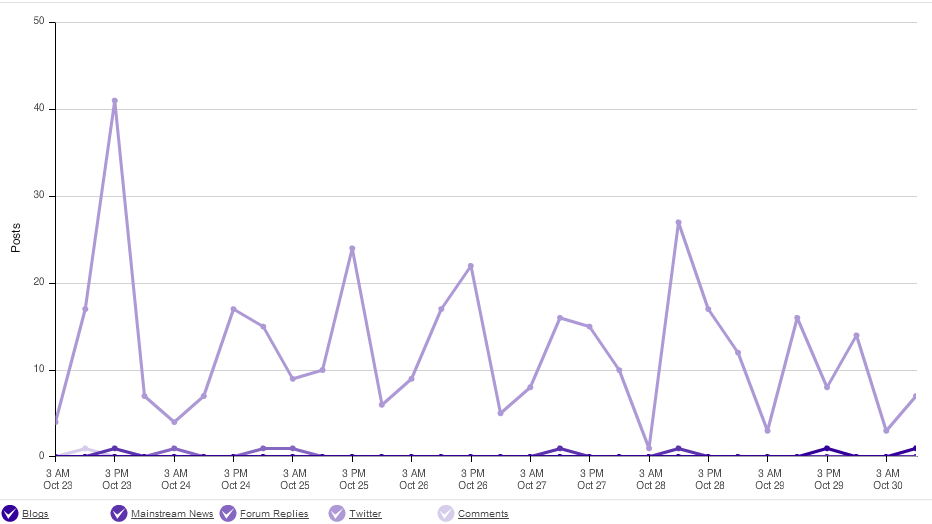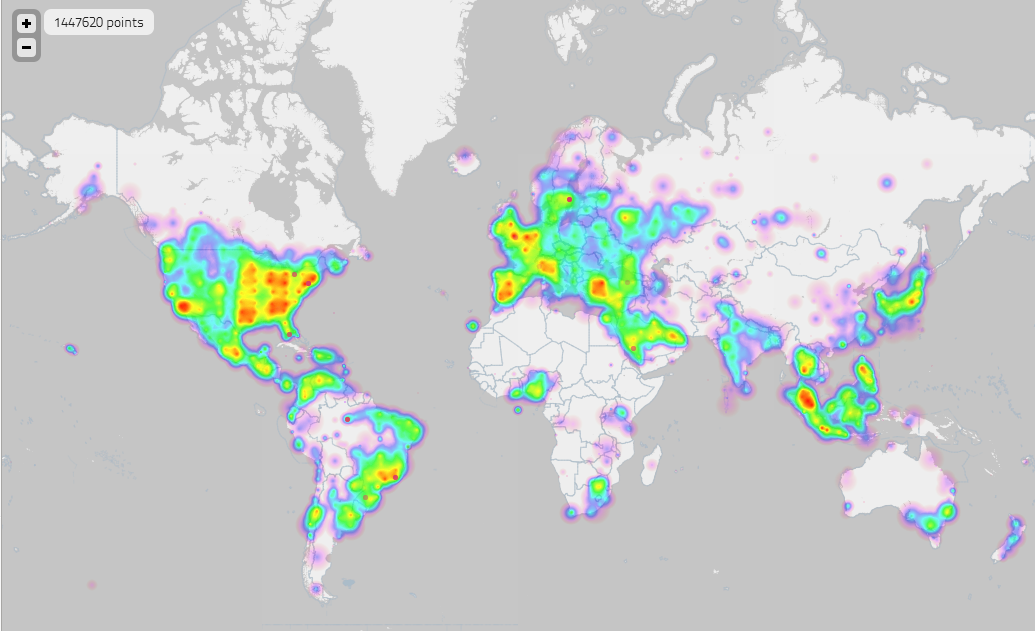- Google+ pages for your business will simply be a necessity for search ranking optimization thanks to what we know already as Social Search
- What is Social Search? To really understand Social Search I strongly suggest going through this presentation. In a nutshell though, Search and Social are now very much linked: Google’s search engine takes into account social signals: “likes” and “+1s” as well as being linked to Google+ pages.
- Google+ is a fast growing social network inhabited by tech savvy individuals, and while the demographic is mainly male, this should change (sooner rather than later) as Google ‘push’ the network onto users who enjoy other Google services like Gmail and YouTube
- Google+ also sees a natural integration with Google Maps and verifying your business page allows for listings under Google Places – another SEO benefit
- YouTube already has the option to link your account with your Google+ profile, and you’ll soon be able to link your page to your YouTube channel as well, allowing for greater integration.
- You can stream live Hangout sessions on YouTube and the platform has entered the Live Streaming market.
- It’s as if Google are planning for a future they know will revolve around the Google+ page as their page manager allowance has been increased to 50+ people per account.
- YouTube already has a partnership system to encourage ad revenue that businesses can utilise with excellent video content
All of these existing and future benefits should be a “no brainer”. Google’s policy couldn’t be any more transparent – they’ll do everything in their power to push Google+ as much as possible as they realise the importance of social in their long term strategy.
So what are you waiting for? Get on!

In case you didn’t know already…the Christmas season is coming! The run-up to Christmas is one of two times in the year, with April-May time usually, when there is a boom in online business. We are a little over one month away from the holidays, so now would be the best time to look at how to maximise the seasonal performance of your business. One of the best ways to do this is benchmarking.
Checking the performance of your business in previous years is a good indicator of how well it can do at a certain time of the year. You have the data which can tell you how to do as well or better this year. Google Analytics can show you seasonal trends, with details aplenty. It is best to compare one previous year with another: if there was growth during a specific period in those two years, then you can expect that same growth rate in that same period this year. However, if there was higher growth in one year than another, try to find out why. Did you make positive changes to your website at that time? Did you launch a new product, which turned out to be a hit? Can this be repeated again this year? Make sure to also take into account market changes in those years, to try to explain seasonal trends. If there were any market changes for your business this year, how can you capitalise on them?
Remember: just because Christmas is coming, it does not mean you should just sit self-assuredly in your chair and wait for Santa Claus to come to town and bring you great business. Preparation and planning are everything, and you should keep an eye on all the opportunities available to you at this point in time, no matter how well things usually went in previous years.
For more useful information about benchmarking for Christmas:
http://www.ppchero.com/benchmarking-ppc-in-your-industry-for-the-holiday-season/
DO:
- If you’re looking to advertise your website on your Facebook page, then make it easy on yourself and the potential viewer by placing it in the forefront (specifically, in the About section).
- Positioning: it has been psychologically proven that users read pages beginning from the left to right. Don’t rely on human curiosity alone, if you want to advertise Twitter on your Facebook page then install the app and move its position up to the frontal bar. Position all your apps based on your priority (see image).
- If you’re finding content on Facebook for example is placing on the right and it’s of valued importance to you, then Highlight the post (so it will shift left and take up the mid section) for as long as needed.
- Clicks: if the user has to click more than twice from your social post to reach its content goal then reconsider the overall design structure.
- Use quality images that express your message as clearly as possible. Ensure these then link back to the page you want users to reach. Pin these images directly from your website on Pinterest to generate traffic.
DON’T:
- Re-post the same content or links in multiple areas too frequently. While ease of access is achieved the user’s perception of your intentions are skewed as a consequence.
- Post mismatching content. You don’t want to advertise a special deal that users then can’t find on your website – ensure your website is optimized and easy to use.
It is my belief that businesses in some cases misconstrue the meaning of quality content. It’s important to realise that quality in this sense is also defined by simplicity and ease of access on the consumer’s part.
All of this may seem like common sense but the psychology behind ease of access and user ability should filter through all your thinking when producing content. An attention to detail can make the difference when planning and executing online social media campaigns. Don’t take it for granted!
The tweet itself hit several key touchpoints that explain its record breaking reach: reacting to a breaking news event, broad coverage on the network via a trending hashtag and messaging a network of 22.5m followers, alongside photo content that features no message or political slogan, just two people embracing.
Four more years. twitter.com/BarackObama/st…
— Barack Obama (@BarackObama) November 7, 2012
What we may want to pay attention to is how the whole social media universe could affect the outcome of this election. Of course, this will not be the first general election in history in which social networks were instantly accessible to open up discussions about the candidates, but the presidential race in the United States has a magnitude (and ruthlessness) that cannot be found anywhere else in the world, so it should be interesting to look into. The presidential campaigning period is a time of ubiquitous semi-propagandist media distribution – books are published, TV ads are aired, Youtube videos are uploaded, private photos are revealed – which serve either to endear the electorate to one candidate, or discredit the other. Overall £2bn was spent in the Obama-Romney race.

Two years after the race began, the statistics show that the candidates are neck to neck, with Obama only marginally in the lead. And this got me thinking: it seems amazing that, in this day and age, the two candidates for the most powerful position in the world can still be neck to neck! Wouldn’t unlimited access to information and constant dialogue, offline and online, have made the decision any clearer for the voters as to who to root for, or created a strong favourite? The US is a country of strong political extremes, and this does not seem to have been affected in the slightest by the technology that surrounds us. Americans, it seems, will stay true to their political and religious affiliations, no matter how well informed they are about the personalities and policies of the candidates.
But what about the as-of-yet undecided voters? With the huge amount of social media activity that is bubbling among Americans, it will be worth investigating whether online conversations influenced these voters’ decision and tipped the scale, once the results are in and the new American president is announced…
Questions have been raised of their plight signalling a saturation of the social game market, while there are others such as EA’s John Riccietello (who would have been delighted by the removal of The Ville) who claim the downfall as mere hype. But are there any implications for social media as a whole?
To answer that question we need to first clear up a common misconception: that there’s a line between social games and social media. Social gaming is a form of social media. Does this mean we need to see Zynga’s difficulties rub off on the entire social media landscape for people to stand up and take notice? Yes, though the chances of that happening currently are slim – it has to get much worse first. What I feel is important to understand here is that conversations, relationships, sentiment, can all be expressed and forged while playing games on social platforms like Facebook – where the UI is purposely built to cater for any prospective social interaction.
With this in mind, if Zynga’s sudden halt at the top of the social gaming food chain is an indication of saturation, then yes, this will directly affect social media as a whole. Here’s one reason why- games from Zynga and others generated 15% of Facebook’s revenue in 2011, but will that now grow? Facebook ads is another example, where the types of ads displayed on game related pages may need to be re-thought.
Of course social games will continue to be immensely popular – there may be a saturation of games produced currently, but the demand to play is still there. As a consequence marketers need to seriously start considering how social games effect their own social media strategies, as their growing intertwinement will rub off on other popular social platforms like Twitter and Reddit in time.
Social media monitoring tools are an essential part of extracting meaningful insights from social media data.
At Tug, we use Radian6 because it can neatly display high volumes of data, it has a powerful sentiment analysis algorithm and is able to drill down to small specific details that help to pick out valuable insights that can often inform a social media strategy for our clients.
One of the most interesting tools that help to manage a company or brands social media output is post frequency (see graph below) that determines what time of day consumers are discussing a brand. This allows the brandto know what time of day its social media messaging will be best received, connecting with its audience and consumers at the point when they are at their most receptive.
For more of an insight into how social media monitoring can help you, please get in touch with Ben: “ben@tugsearch.co.uk”


It’s interesting to note there is no data captured from China, where Sina Weibo, a Chinese micro-blogging site, remains king. Couple that with the fact the Chinese remain extremely stringent with regards to their internet censorship, a lack of geolocalized data is understandable.
You could question what the benefits actually are of being able to display such data (apart from the awesome flashing lights and heat map toggle). Indeed, in the age of big data, being able to present digestible findings that allow for the interpretation of significances is a challenge that can usually be overcome by visualizations such as these. Data visualization though does come with its own difficulties, where different methods and presentation styles can lead to skewed and varied interpretations. Ultimately, these types of challenges are part of the struggle scientists and marketers consistently face with big data.
They offer three helpful tips for encouraging check-ins:
1. Offer a special or two. Your goal is to reward your most loyal customers and to attract new ones. You can do so by offering two different specials: one for customers who check in frequently (or just for the “mayor,” the person who’s logged the most check-ins on Foursquare) at your place, and another for customers checking in for the first time. The latter could be a discount on their first purchase.
2. Encourage groups. Want to draw a bunch of people to your business at a certain time? Create a special offer on Foursquare that gets unlocked when a “swarm” of people check in within a certain amount of time. Don’t need that many people? Make an offer that requires the patron to arrive with a specific number of friends, colleagues, or family members. For instance, offer a free dessert to a party of four or more.
3. Don’t give it all away. You don’t necessarily need to offer freebies or discounts, though those certainly are attractive to customers. Get creative and think about other perks that people may enjoy, such as special treatment or access. For example, reserve parking spots for people who check in, let them skip the line for a special event, or provide a behind-the-scenes exclusive preview of an upcoming product or service

